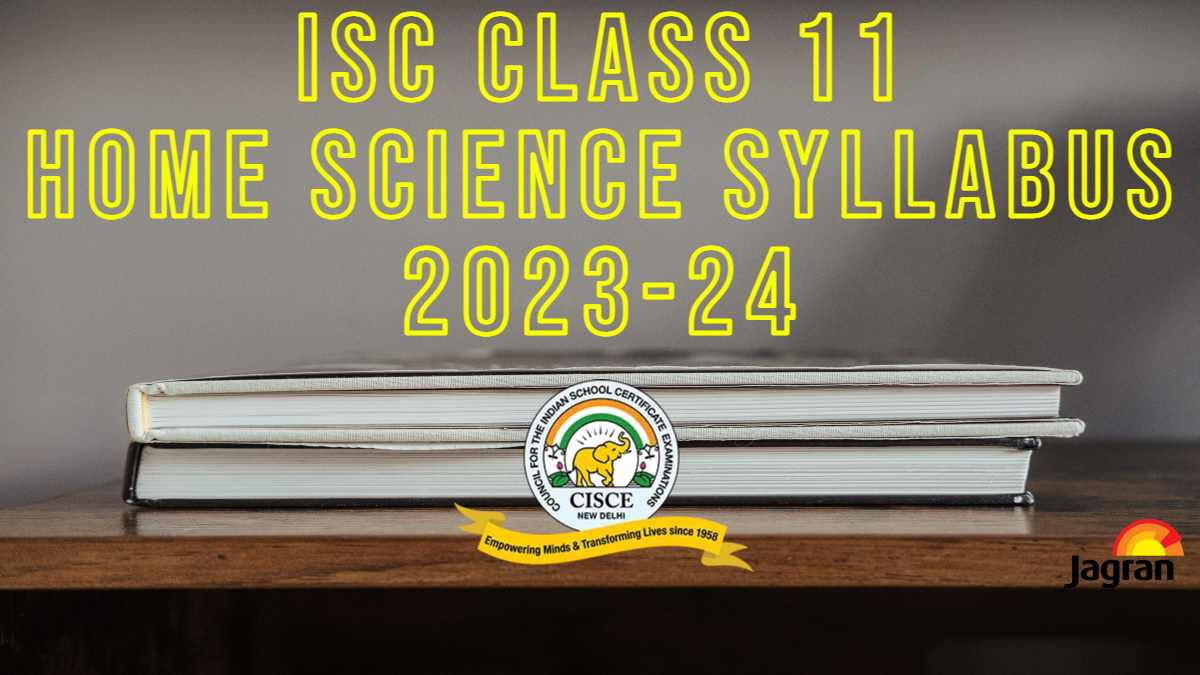Check Notification, Salary, Application Process & Other Details
[ad_1] BPSC Assistant Architect Recruitment 2024: The Bihar Public Service Commission (BPSC) has released notification…
[ad_1]

1. Concept and Scope of Home Science
(i) Introduction to the streams in Home Science and how they integrate to form a meaningful whole.
An explanation that Home Science is an umbrella term for a field of Applied Sciences, made up of Foods & Nutrition, Resource Management, Human Development, Textiles & Clothing and Communication & Extension.
(ii) Importance and relevance of the study of Home Science.
An understanding of how the study of Home Science enables one to understand and develop skills to deal with issues and concerns related to self, family and society.
(iii)Career options in Home Science.
A brief study of the various career options available for Home Science students.
2. Food and Nutrition
(i) A review of the relationship between food and health; the importance of a balanced diet for everyday life.
Dimensions of health: physical, social, emotional, mental and spiritual. Classification of food on the basis of nutrients and functions. Functions of food: physiological, psychological and social.
Concept of balanced diet and food groups. Nutritional requirements for different age-groups (ICMR tables).
(ii) Study of macro and micronutrients.
Sources, functions, Recommended Dietary Allowances (RDA) and deficiency of the following nutrients: carbohydrates, proteins, fats, minerals (iron, calcium, iodine and phosphorous) and vitamins (A, D, E, K, B1, B2, Niacin, Folic Acid & C); role of water and fibre in the diet. Basal Metabolic Rate (B.M.R) and the factors affecting B.M.R.
3. Storage and Preservation of Food
(ii) Storage of foods: Perishable, semi-perishable and non-perishable foods.
Meaning and examples of perishable, semi-perishable and non-perishable foods; a general idea of storing common foods at home.
Convenience foods and their merits and demerits.
(iii)Food preservation: Need and importance, principles and methods.
Need and importance of preserving food (to be done briefly).
(a) Principles of food preservation:
− Use of high and low temperature;
− Change in pH;
− Removal of moisture;
− Use of chemical preservatives (household: salt, sugar, lemon, oil, spices, vinegar; commercial: sodium benzoate and potassium meta bisulphite).
(b) Methods of food preservation:
− Bactericidal Methods: sterilization by cooking.
− Bacteriostatic Methods: dehydration, refrigeration, chemical preservation (i.e. salting, use of sugar, use of lime, vinegar and chemical preservatives), pickling.
Brief description and examples of each of the above.
4. Resource Management
(i) Resources: Human, non-human and shared resources.
Meaning of resources; types of resources: human – time, energy, knowledge, skills, attitudes; non-human – money, goods, property); shared (community) facilities – schools, parks, hospitals, transport, water, electricity, fuel.
(ii) Management of Resources: need and importance of Management; Management process; Decision making.
(a) Role of management in efficient and effective utilization of resources. A brief understanding of the Management process: Planning, Organizing, Implementing, Controlling, and Evaluation. Role of Decision Making in management of resources.
(b) Methods of maintenance/ conservation of shared resources.
(iii)Time and Energy Management.
Concept and importance of time and energy management; types of time plans (daily, weekly, monthly, annual); significance of peak load and rest periods; management of time. Work simplification: Meaning and methods.
5. Human Development
(i) Growth and Development from birth to late childhood.
Concept of growth & development; factors affecting growth & development. Influence of sports and physical fitness. Milestones of development from birth to late childhood (ages 0 to 12 years).
(ii) Periods of growth and development during childhood.
Periods of development during childhood from birth to 12 years of age, (infancy, early childhood, middle childhood and late childhood).
(iii) Perspectives of Human Development.
The following aspects need to be explained – development is multidimensional and interdisciplinary – includes biological, cognitive, emotional and social development; development is continuous and cumulative; it is variable, reflecting individual variation; cultural differences are reflected in development; both heredity and environment influence development.
(iv) Personality development and image building.
Personality: concept; factors affecting personality (environmental and genetic); types and traits of personality. Competencies for effectiveness: empathy, information seeking, communication skills, initiative, self-confidence, importance of personal grooming
6. Care and Maintenance of Textiles
(i) Laundering of cotton, linen, wool, silk, rayon; storage of clothes.
Methods of wet cleaning; steps in laundering and difference in techniques used.
Finishing by starching, blueing and use of optical brightening agents and pressing/ironing. Storage of wool, silk, cotton, linen, rayon; special items like zari, lace and leather.
(ii) Household methods of stain removal.
Stains of animal origin: blood, egg, milk. Stains of vegetable origin: Turmeric, oil/curry, tea. Stains of mineral origin: ink, lipstick, rust.
7. Communication and Extension
Methods of Communication: individual, group and mass; social media.
Individual: verbal and non-verbal.
Group: discussions, demonstrations, field trips. Mass: print and electronic.
Social media: meaning, types, advantages and disadvantages.
[ad_2]
Source link